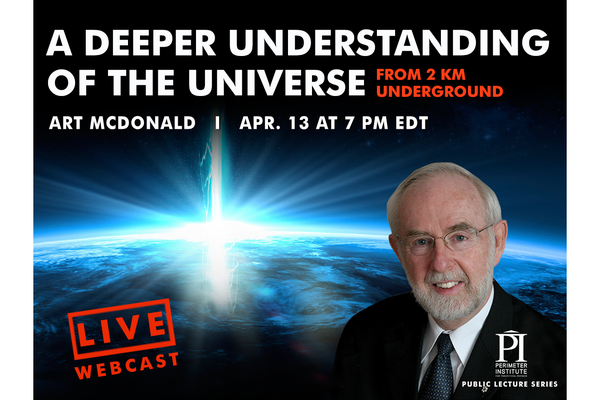Neutrinos are some of the most common particles in the universe—and some of the weirdest. These fundamental bits of matter are cousins of electrons that weigh almost nothing. They come in three known flavors and—bizarrely—can alternate between them, swapping identities as they fly through space. The discovery of this odd characteristic won two scientists the 2015 Nobel Prize in Physics and garnered the 2015 Breakthrough Prize for more than 1,300 researchers who worked on the experiments. Physicist Arthur McDonald, director of the Sudbury Neutrino Observatory (SNO), was a recipient of both prizes, and will discuss the strange and wonderful physics of neutrinos during a public lecture tonight at 7 P.M. Eastern time that will be broadcast live on this Web page.
The lecture, “A Deeper Understanding of the Universe from 2 Km Underground,” is part of a series at the Perimeter Institute for Theoretical Physics in Ontario. Online viewers can pose questions by tweeting to @perimeter and using the #piLIVE hashtag.
On supporting science journalism
If you're enjoying this article, consider supporting our award-winning journalism by subscribing. By purchasing a subscription you are helping to ensure the future of impactful stories about the discoveries and ideas shaping our world today.
You can view videos of some past Perimeter physics lectures below: The Hunt for Dark Matter and Dark Energy [Video] Strange, Dense Matter: The Power of Neutron Stars [Video] How Radioactivity Can Benefit Your Health [Video] The Promise of Optical Atomic Clocks: Watch Live Wednesday [Video] To Explain the Universe, Physics Needs a Revolution [Video]
